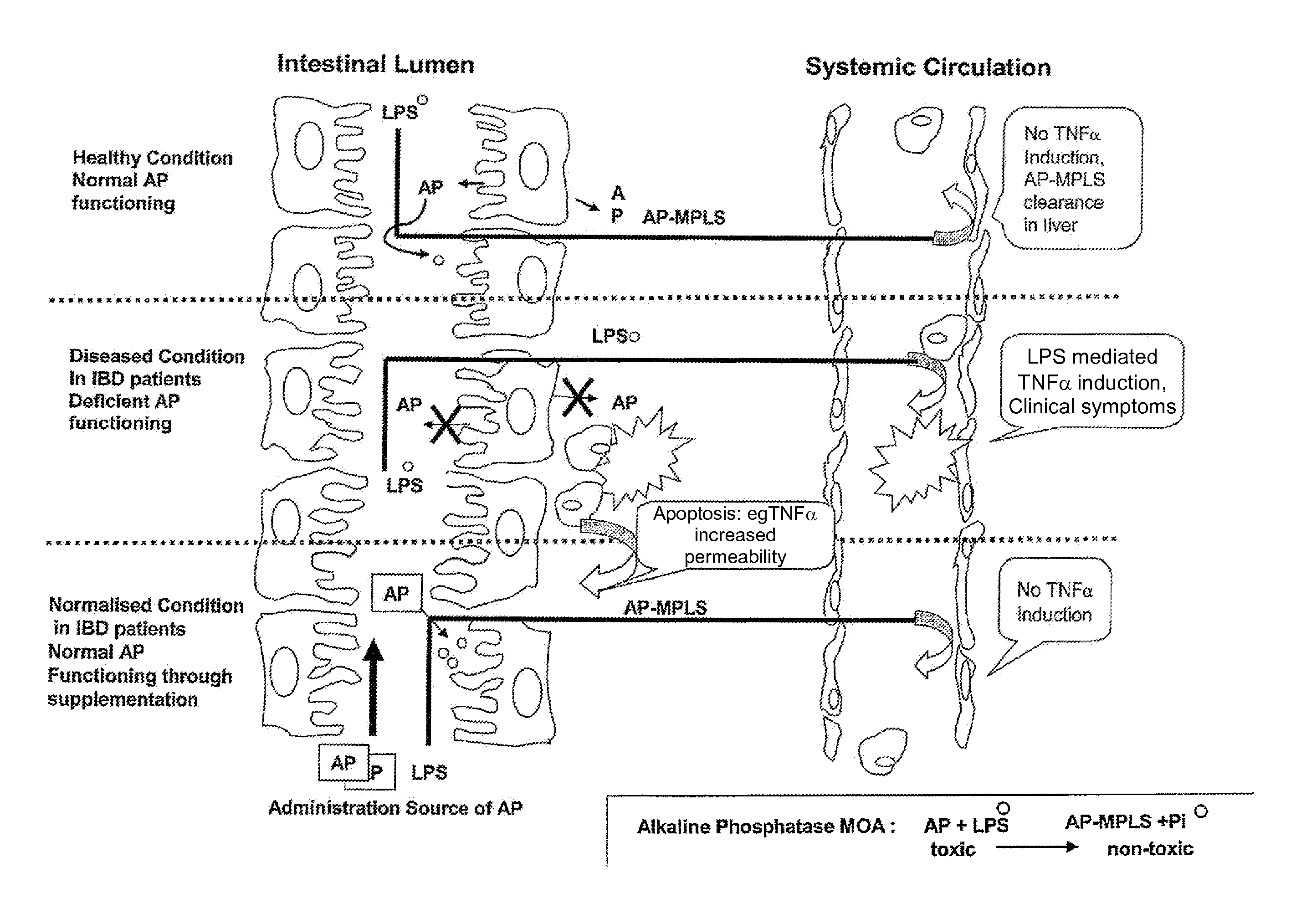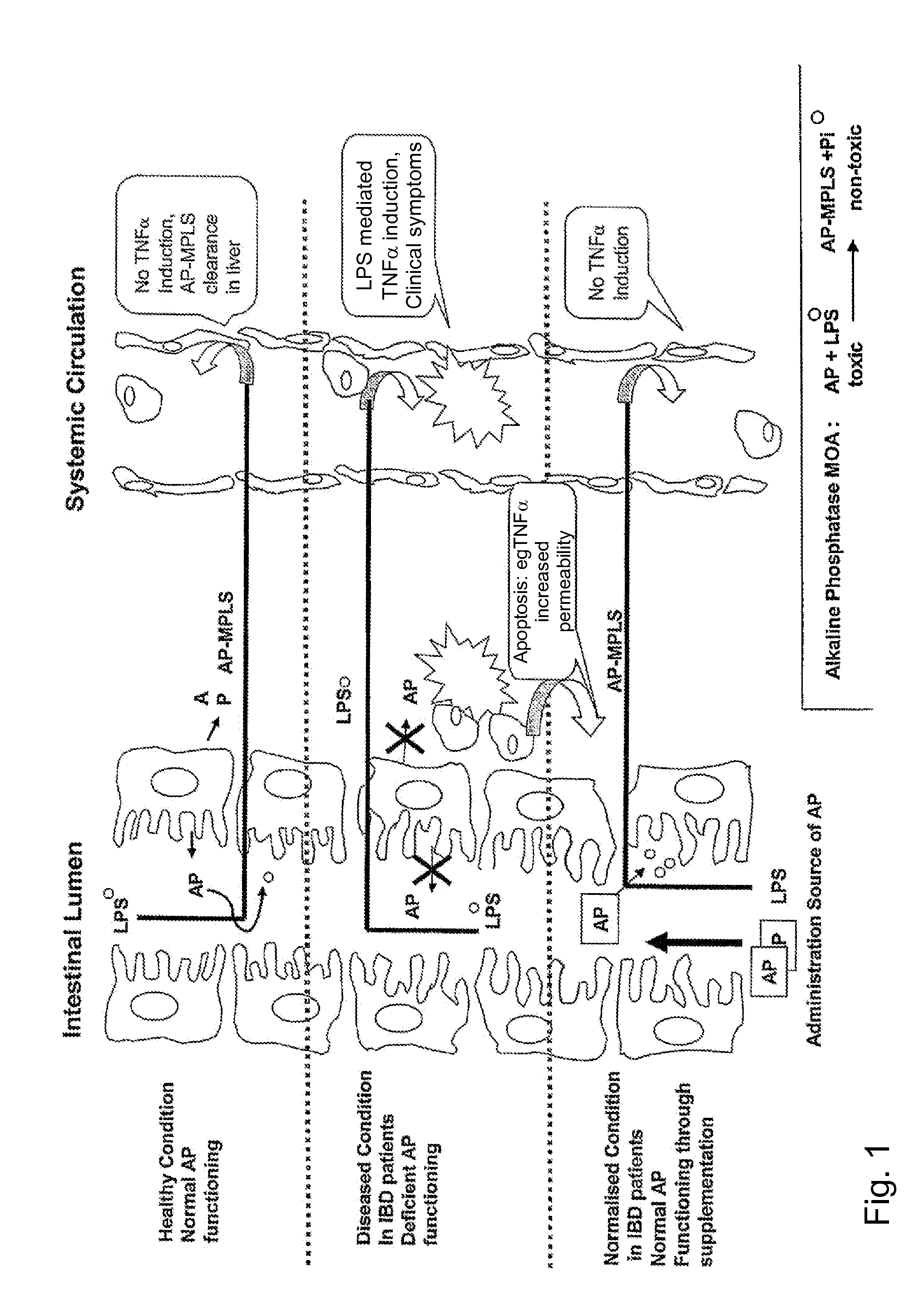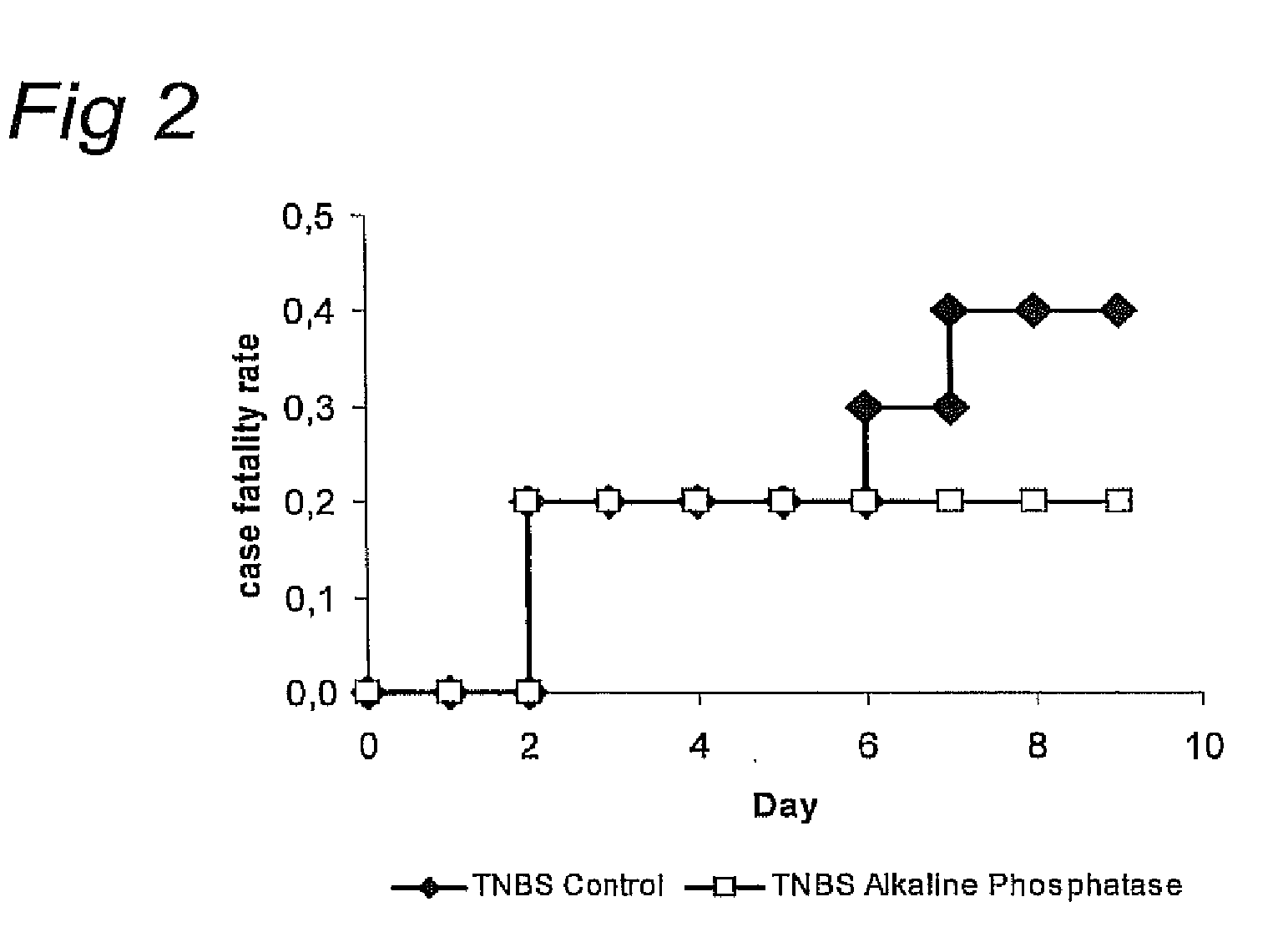Means and method for treating and/or preventing necrotizing enterocolitis
a technology of enterocolitis and necrotizing enzymes, applied in the field of medicine, can solve the problems of affecting the effect of bacterial strains used in probiotic therapy, affecting the effect of probiotic therapy, and affecting the effect of hepatic damage,
- Summary
- Abstract
- Description
- Claims
- Application Information
AI Technical Summary
Benefits of technology
Problems solved by technology
Method used
Image
Examples
example 1
[0148]The current invention, and in particular the effectiveness of AP enzymes, preparations and compositions, and different modes of administration of AP may be tested in various animal models for inflammatory bowel diseases that are known in the art. Animal models mimicking human IBD comprise antigen-induced colitis and colitis induced by microbials; other inducible forms of colitis, colitis induced by chemicals (e.g., trinitrobenzene sulfonic acid (TNBS); Montfrans et al., 2002), immunological and physical and genetic colitis models (transgenic and knock-out models, see for instance SCID mice, Davis et al., 2003, IL-10 KO mice, Rennick et al., 2000, SAMP1 / Yit mouse, Kosiewicz, et al., 2001 and Strober et al., 2001); adoptive transfer models and spontaneous colitis models (Kosiewicz et al., 2001).
[0149]The chemically induced Dextran Sulfate Sodium (DSS) colitis model was originally described by Okayasu et al., Gastroenterology, 199, 98:694-702, and is a model for human ulcerative ...
example 2
AP-Treated Mice Develop Less Severe Colitis after TNBS or DSS Treatment
Materials and Methods:
Experimental Design:
[0152]Three independent experiments were performed. For the first DSS experiment 42 eight-week old wild type C57BL / 6 mice were obtained and for the TNBS experiment 20 eight-week old wild type BALB / c mice were obtained, from Charles River and from Harlan Nederland (Horst, The Netherlands), respectively. For a second DSS experiment, 72 eight week old C57BL / 6 mice were obtained from Charles River Nederland. During the experiments, the mice were housed under standard conditions and they were allowed free access to water and food.
[0153]In the first experiment with C57BL / 6 mice, colitis was induced by administration of 1.5% (n=18) or 2.5% (n=20) dextran sulfate sodium (DSS) in the drinking water of the mice for one week.
[0154]In the BALB / c mice, colitis was induced by rectal administration at day zero and seven of 1 mg 2,4,6-trinitrobenzene sulfonic acid (TNBS) (Sigma Chemical ...
example 3
Cytokine Production and AP Activity were Decreased in Colons of AP-Treated Mice
[0170]Colon homogenates of TNBS and DSS mice were analyzed for the production of cytokines by a cytokine bead assay to investigate the size of the Th1 response. In contrast to the increased cytokine production in the CLN of AP-treated mice, the production of TNF-α, IFN-γ, IL-2, IL-4 and IL-5 was decreased in the colon homogenates of these mice compared to the control mice, however not significantly (see Table 2). The mice with 2.5% DSS-induced colitis confirm similar results, although these results did not reach statistical significance, too (not shown).
[0171]The production of IL-2, -4 and -5 in the 1.5% DSS mice were almost undetectable (data not shown). The production of TNF-α was decreased in the AP-treated mice compared to the DSS control mice, however not significantly (see FIG. 7). In case of the IFN-γ production, the differences were significant (p<0.05): the IFN-γ production was decreased from 100...
PUM
| Property | Measurement | Unit |
|---|---|---|
| Volume | aaaaa | aaaaa |
| Fraction | aaaaa | aaaaa |
| Time | aaaaa | aaaaa |
Abstract
Description
Claims
Application Information
 Login to View More
Login to View More - R&D
- Intellectual Property
- Life Sciences
- Materials
- Tech Scout
- Unparalleled Data Quality
- Higher Quality Content
- 60% Fewer Hallucinations
Browse by: Latest US Patents, China's latest patents, Technical Efficacy Thesaurus, Application Domain, Technology Topic, Popular Technical Reports.
© 2025 PatSnap. All rights reserved.Legal|Privacy policy|Modern Slavery Act Transparency Statement|Sitemap|About US| Contact US: help@patsnap.com



